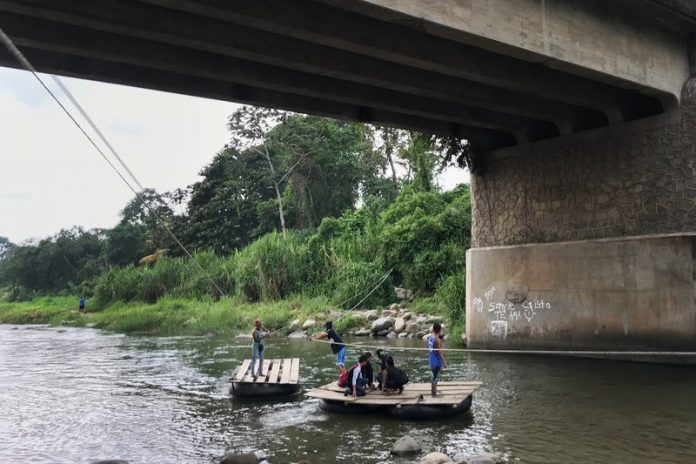On the Suchiate River dividing Mexico and Guatemala, it sure looks easy to cross north without papers.
A young, mustachioed man is pulling a makeshift raft across the quiet river via two ropes connecting the countries. The crossing costs 4 quetzales, 10 pesos or 50 U.S. cents. The raft captain says that nearby migration officials rarely intervene.
But the impression that Mexico is lax on migrants disappears as you head just a little north.
“They put up lots of checkpoints,” says Gustavo Rivera, a bus driver shuttling between Mexico’s southeastern border and the nearest city, Tapachula. “Immigration [agents], federal police, soldiers, local police. I don’t get many migrants on the bus anymore because of the checkpoints.”
President Trump singled out a group of families from Guatemala, Honduras and El Salvador heading to the United States as evidence that “Mexico is doing very little, if not nothing,” to stop immigration. But Mexico has actually assembled an aggressive enforcement strategy, with U.S. backing.
The strategy tightened up in 2014, shortly after American officials declared a crisis over the arrival of large numbers of Central American children at the U.S. border. The U.S. began funding Mexico’s immigration crackdown with the Southern Border Plan.
Rather than amassing troops on its border with Guatemala, Mexico stations migration agents, local and federal police, soldiers and marines to create a kind of containment zone in Chiapas state. With roving checkpoints and raids, Mexican migration agents have formed a formidable deportation force. Since the…
… Read More
—-
Click Read More to read the rest of the story from our content source/partners – Urban Christian News
